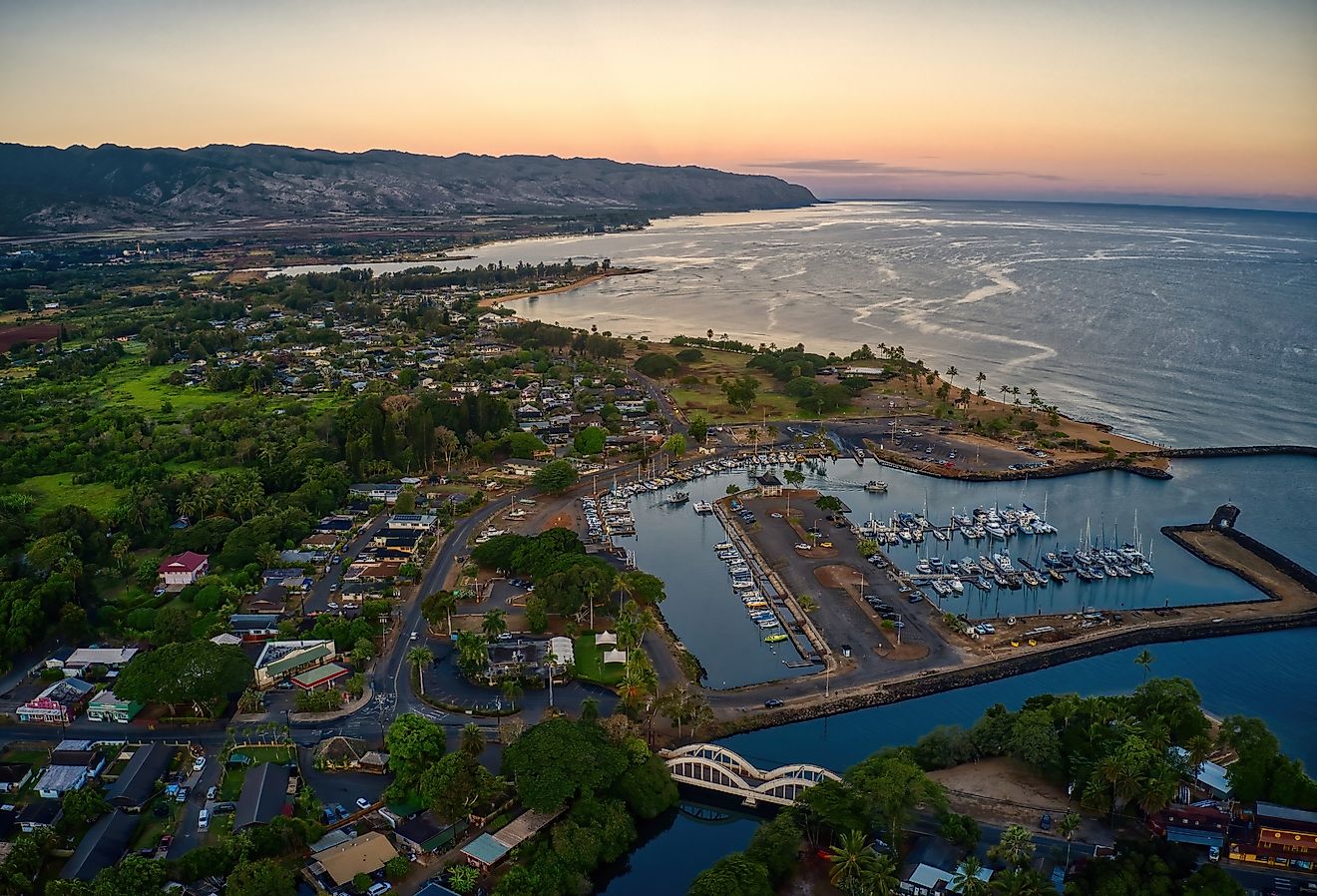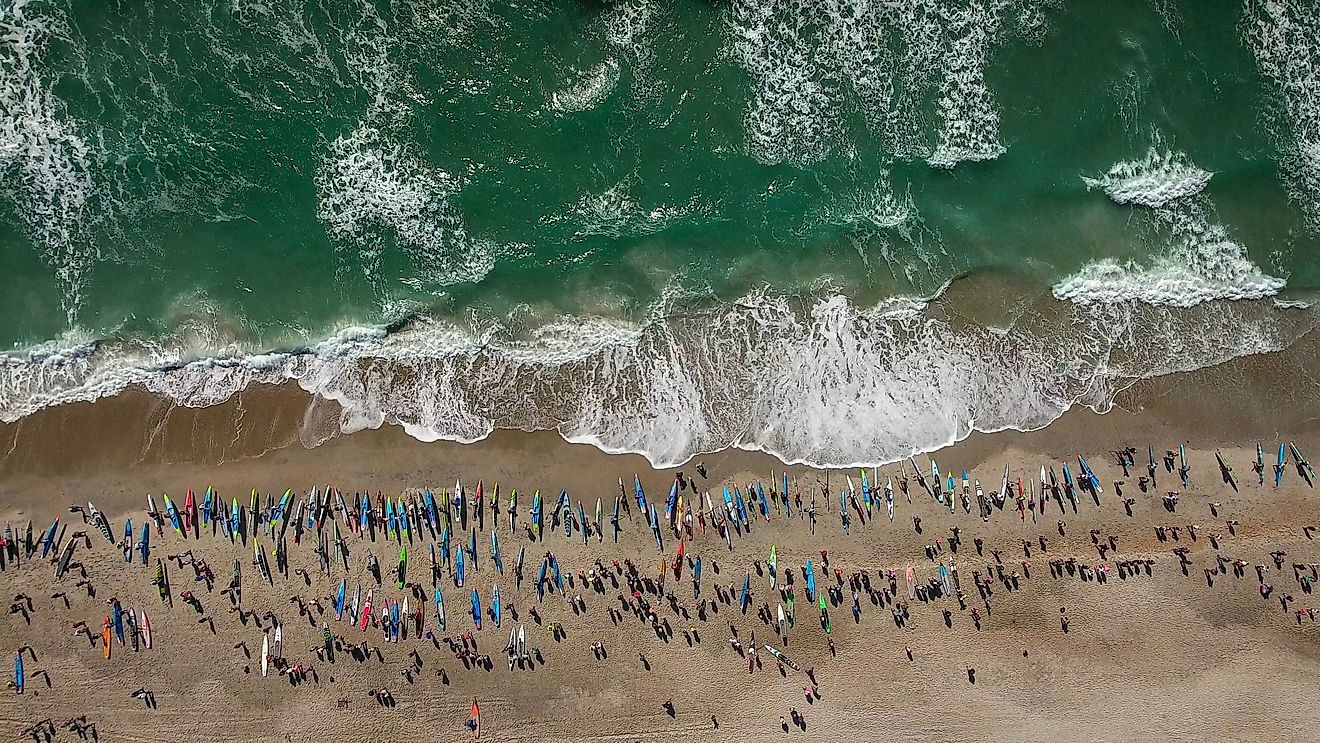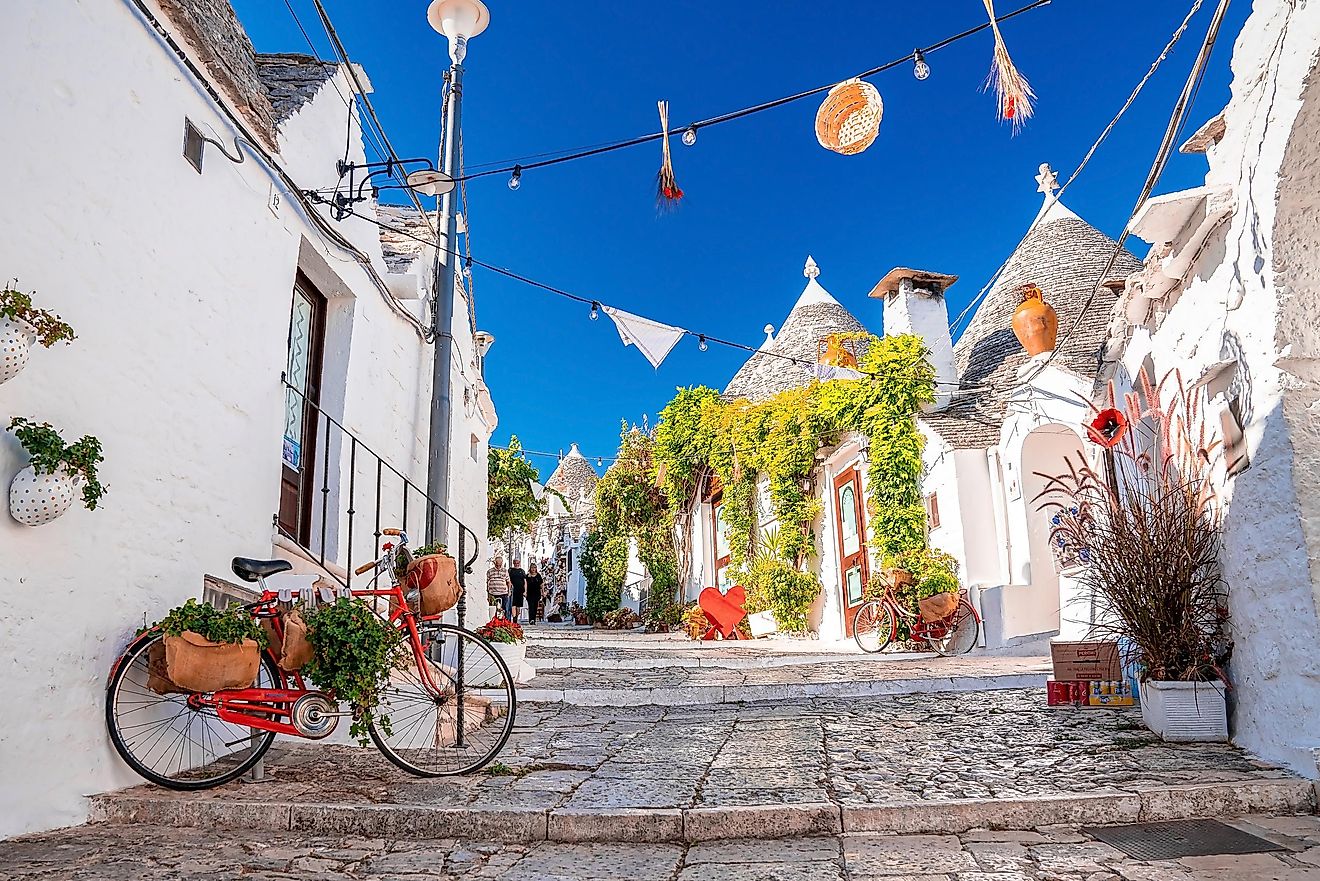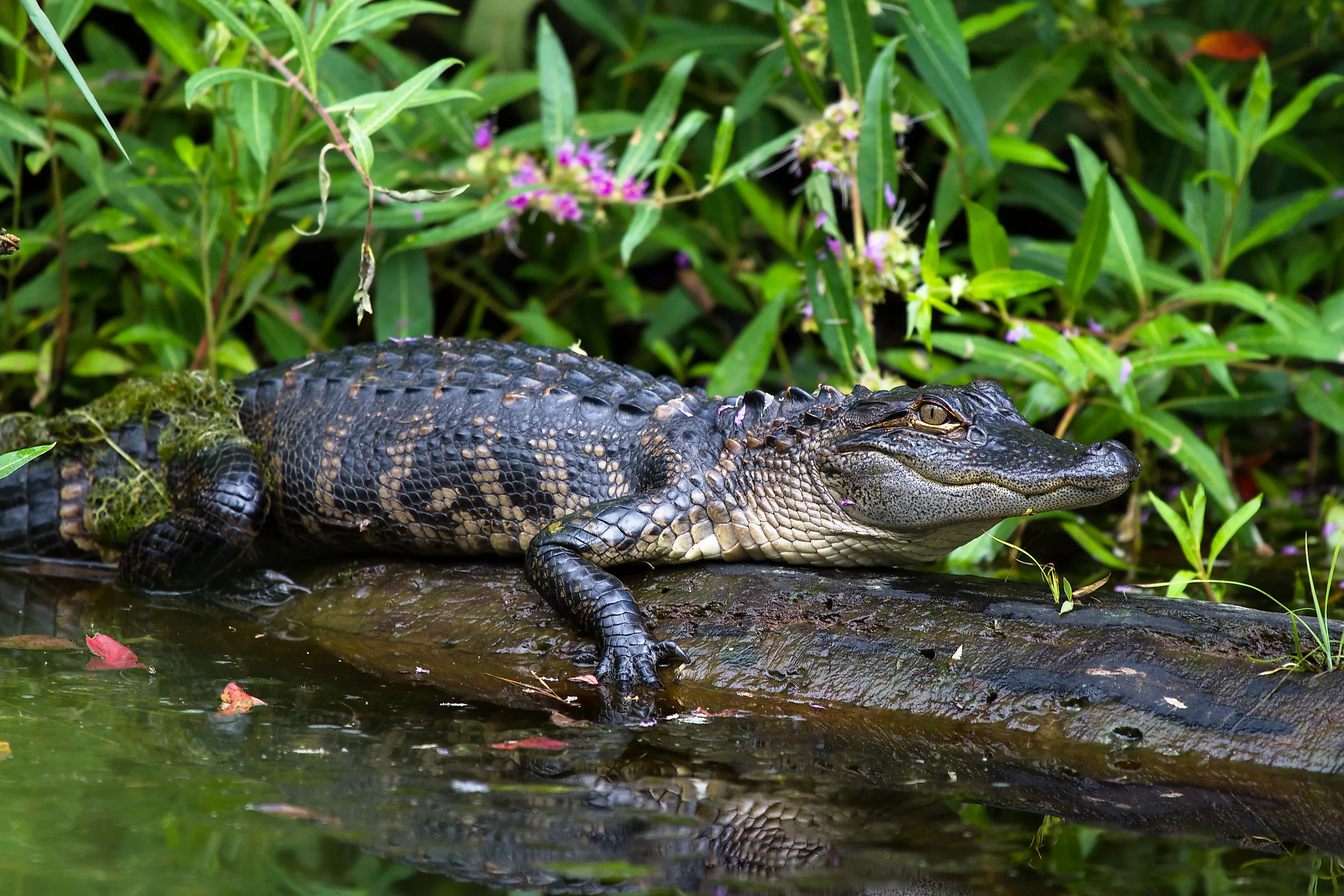
7 Most Alligator Filled Places in North Carolina
The American alligator can be found in the United States from North Carolina to the Rio Grande in Texas. On the east coast of the US, alligators are common in the southern states of Louisiana and Florida, where visitors seek them out on swamp tours on airboats or glass-bottomed boats. In the Tar Heel State, locals will tell you that there are plenty of gators in North Carolina’s Coastal Plain, especially in the southern portion of the region in low-lying bodies of water, marshes, swamps, and coastal wetlands.
Alligators live in fresh bodies of water as far west as Robeson and Cumberland Counties in North Carolina, building dens with underwater entrances at the water's edge. They are quite the giants, males average 11.2 feet in length compared to the 8.2 feet of females, with some hefty males weighing nearly 1,000 pounds. In the wild, these creatures can live up to 50 years and generally stay safe from predators once they reach about 4 feet long. If you’re ready for a thrilling adventure, North Carolina boasts some of the most alligator-filled spots, perfect for witnessing these incredible reptiles in their natural habitats.
Alligator River
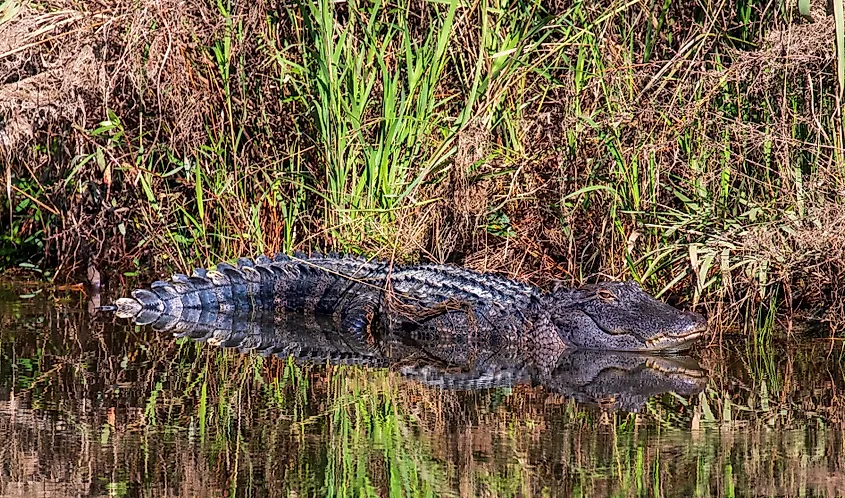
North Carolina Alligator with fall colors.
The highest concentration of alligators in North Carolina is near the Outer Banks in the over 150,000-acre Alligator River National Wildlife Refuge—one of the largest national wildlife refuges in the United States. Considered among the last remaining strongholds for black bears in eastern North Carolina and on the mid-Atlantic Coast, the refuge is also a valuable habitat for various wildlife, including the American alligator. Located on the Albemarle-Pamlico Peninsula, it includes a variety of habitats, such as wetlands and swamps, making it perfect for alligators.
The best way to see alligators in the refuge is to book an Alligator River tour with an outfitter like Outer Banks Kayak Adventures, where experienced kayak guides take visitors on a scouting trip for these prehistoric creatures. Although typically shy, alligators can be spotted in certain canals or waterways within the refuge. It’s common to see them either swimming in the water or relaxing along the shoreline.
Greenfield Lake
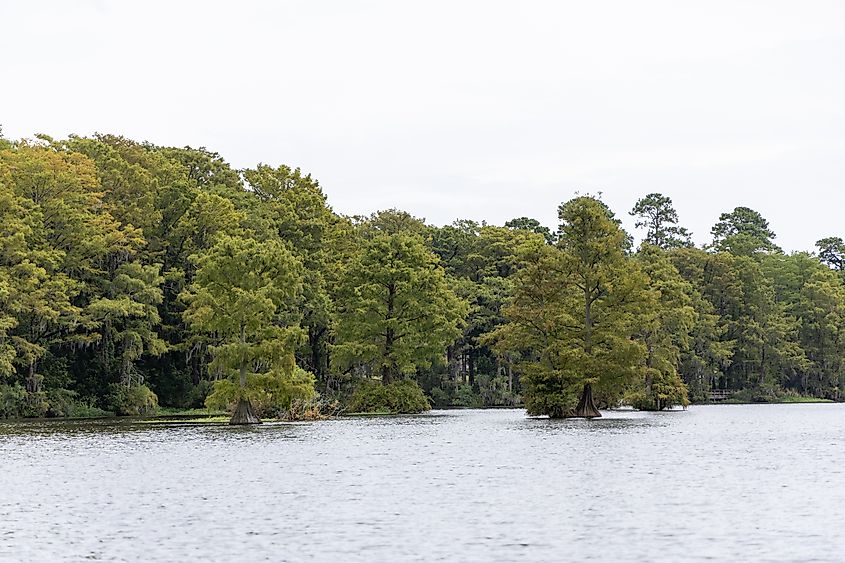
Located southeast within the city of Wilmington, North Carolina, the scenic Greenfield Lake is rich in history with Spanish moss-draped 100-year-old cypress trees. It’s a popular 190-acre park with residents and visitors who enjoy birdwatching and boating, where 2 to 4-person paddle boats, kayaks, and canoes are available to rent from the boathouse. Audio tours of the lake are also available from the Cape Fear River Watch website.
Greenfield Lake is also the ideal place to see the American alligator in its natural habitat, and it’s not uncommon for boaters to see one floating by or sunning on the lake’s shores. A sign warns people about alligators in Wilmington's Greenfield Lake—don't feed them. Bad human-gator interactions occur mainly because people intentionally feed the reptiles, allowing them to associate people with food and lose their fear of being near humans. Alligators will generally mind their own business unless provoked.
Orton Pond
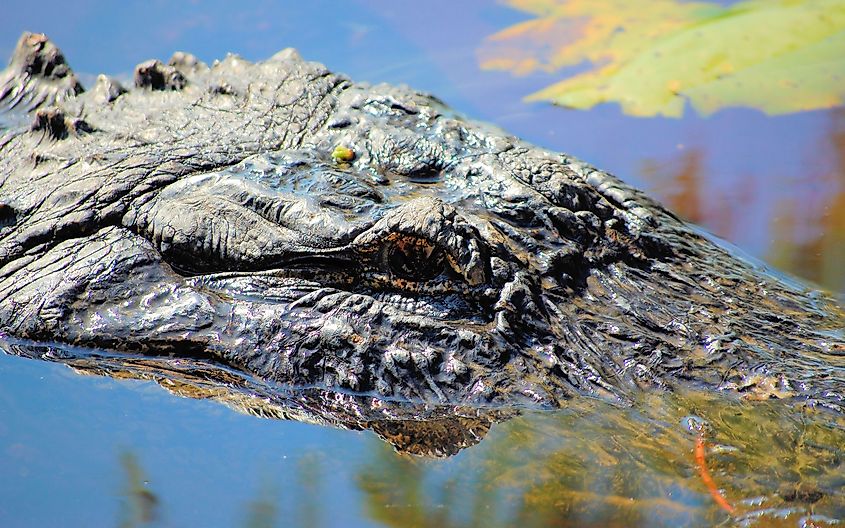
Alligator at Orton Pond Close-Up.
Orton Pond is a 688-acre lake in Brunswick County, North Carolina, roughly halfway between Leland and Southport. It is believed to have one of the highest populations of alligators in North Carolina. The pond is part of the storied Orton Plantation, a historic rice plantation established in the early 18th century, whose Carolina Gold rice fields were planted to take advantage of the water from Orton Pond. Carolina Gold rice contributed significantly to the plantation's economy and established the Carolinas as a major rice-producing region during the colonial period.
The plantation was renowned for its beautiful Southern architecture, live oaks draped in Spanish moss, and beautifully landscaped gardens, and was open to the public as a tourist attraction until 2010. The plantation was used as a location in several Hollywood films and television series, including "Firestarter," “Crimes of the Heart,” and “One Tree Hill.” Today, Orton Pond is home to abundant wildlife, including more than its fair share of alligators.
Lake Waccamaw
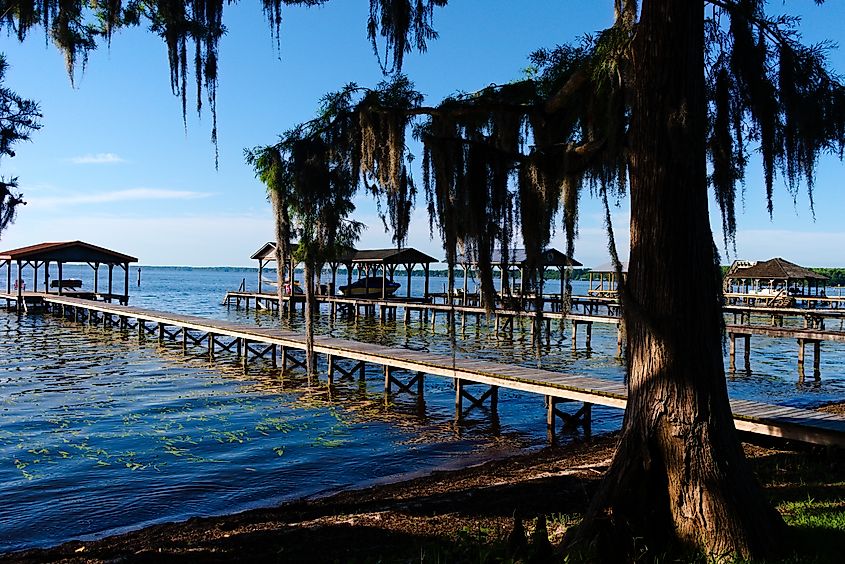
Early morning sun shines across Lake Waccamaw on some docks and boats.
In the heart of North Carolina’s Coastal Plain, Lake Waccamaw has over 9,000 acres of fresh water for residents and visitors to paddle board, canoe, kayak, fish, and even swim (in designated swimming areas) despite its large alligator population, thanks to the state’s conservation program. In 2024, surveys around the popular state park indicate that the population is even larger than in past years, with the lake's warm, shallow waters and surrounding marshes providing an ideal habitat for alligators.
The lake celebrates the giant reptiles with Lake Waccamaw's annual Gator Fest, which includes a live alligator management demonstration, music, entertainment, food trucks, gator merch, and more.
Cape Fear River
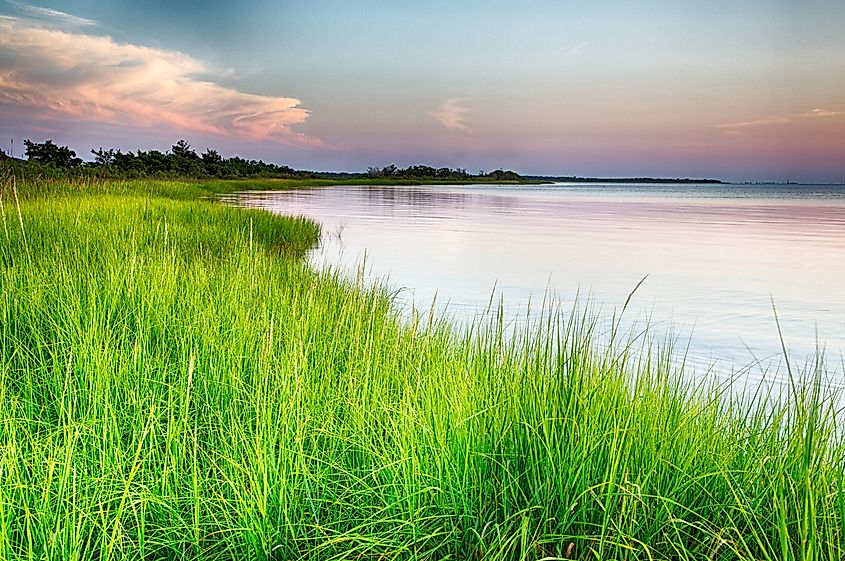
One of the largest watersheds in North Carolina, at more than 9,000 square miles, the Cape Fear River basin stretches from the Atlantic Ocean northwest past Greensboro and encompasses several rivers, including the Cape Fear River, the Deep and Haw Rivers, and the Black River. The Cape Fear River is the basin’s largest tributary and the only river in the state to flow directly into the Atlantic Ocean.
Alligators are frequently spotted along the Cape Fear River, especially in its lower regions near Wilmington. The river and surrounding marshes and beaver ponds support a healthy alligator population. North Carolina’s most well-known gator is Charlie, the Battleship North Carolina’s unofficial mascot. Visitors to Wilmington’s Battleship North Carolina Memorial, moored in the Cape Fear River, will likely see Charlie or Charlene swimming near the ship.
Black River
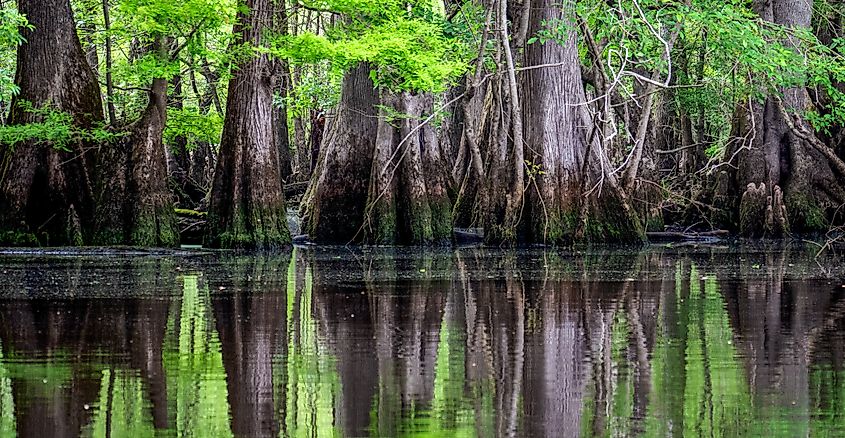
Reflections of ancient Bald Cypress Trees that line the banks of the Black River in Sampson County, North Carolina.
The Black River, a tributary of the Cape Fear River, stretches over 65 miles, winding through the landscape before merging with the Cape Fear. It supports a vibrant ecosystem featuring egrets, osprey, blue herons, crabs, fish, and alligators. Many of these species find refuge among the ancient bald cypresses lining the river. Like any ecosystem, these species rely on each other, maintaining a delicate balance between wildlife and their habitat.
Alligators in the Black River and other areas do not hibernate; instead, they “brumate.” As cold-blooded animals, they react to environmental temperatures. When it gets cold, they enter a state of brumation in underground burrows, slowing their metabolism and stopping eating. They have been seen sticking their snouts out of frozen water to breathe and sometimes become trapped in the ice. When the ice melts, they swim freely again.
Bald Head Island
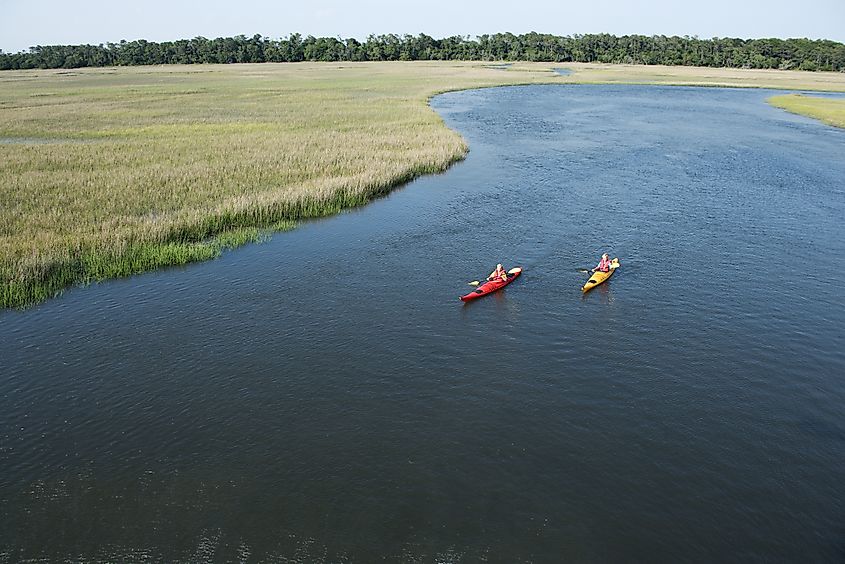
Aerial of two teenage boys kayaking through marshland on Bald Head Island, North Carolina.
Accessible only by ferry, Bald Head Island's freshwater lagoons host a healthy population of alligators often seen near golf course lagoons and other ponds. Like many animals, alligators are most active from dusk to dawn, which is also their primary feeding time. Visitors should exercise extra caution at night on the golf course and around water where gators are known to frequent. Alligators are a threatened species vital to the island’s ecosystem. Fishing and swimming are banned in the island’s waterways, and feeding alligators is strictly prohibited, as it increases the risk of attacks on visitors.
Summary
North Carolina marks the northernmost extent of the alligator's range. As you go south from Virginia to South Carolina, population density increases, following the trend of rising temperatures. Alligators in North Carolina mainly inhabit the marshy coastal plains and southeastern regions because they require warm environments, especially during winter. Although sightings are common, it’s important to keep a safe distance, as alligators are usually non-aggressive unless threatened. There are estimated to be about one thousand alligators in coastal North Carolina, with higher concentrations in the southern part of the state.
